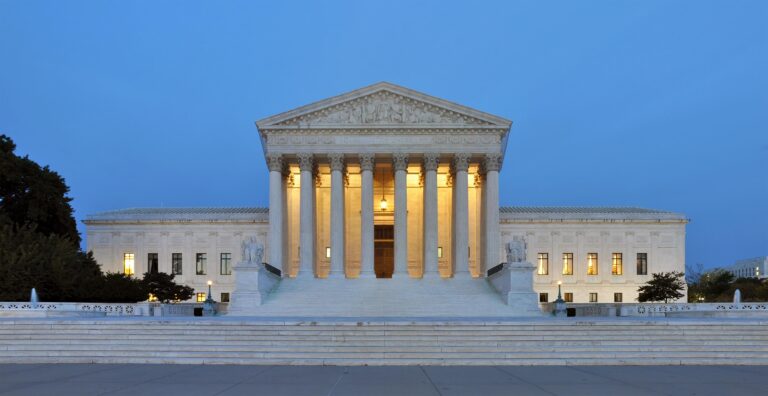How the U.S. Supreme Court Shapes Public Education: Key Impacts and Insights
The Supreme CourtŌĆÖs Influence on Education Policy and Funding Distribution
The U.S. Supreme Court serves as a crucial decision-maker in matters that profoundly affect public education nationwide. Its interpretations of constitutional law often set the framework for education policies, particularly those concerning the allocation of resources and mandates for fairness. For instance, the CourtŌĆÖs rulings have addressed the persistent funding gaps between affluent and under-resourced school districts, directly influencing the educational opportunities available to millions of students. These landmark decisions also clarify the division of authority between federal and state governments in managing education systems, guiding lawmakers and school administrators in policy formulation.
Beyond financial considerations, the CourtŌĆÖs judgments extend to curriculum standards and the protection of student rights, carefully balancing societal values with constitutional guarantees. Notable areas impacted include:
- Ensuring equal educational access irrespective of race, disability, or economic background
- Upholding the separation of church and state by regulating religious activities within schools
- Safeguarding studentsŌĆÖ freedom of expression in academic settings
Grasping these judicial precedents is vital for educators, policymakers, and families navigating todayŌĆÖs complex educational environment.
| Case | Year | Educational Impact |
|---|---|---|
| Brown v. Board of Education | 1954 | Ended racial segregation in public schools |
| San Antonio Independent School District v. Rodriguez | 1973 | Restricted claims for funding equity |
| Endrew F. v. Douglas County School District | 2017 | Raised expectations for special education programs |
Landmark Decisions Affecting Student Rights and School Safety Measures
Supreme Court rulings over the decades have carefully navigated the tension between protecting studentsŌĆÖ constitutional rights and ensuring a secure school environment. The 1969 decision in Tinker v. Des Moines affirmed that students retain their First Amendment rights within schools, famously stating that they do not ŌĆ£shed their constitutional rights to freedom of speech or expression at the schoolhouse gate.ŌĆØ This precedent continues to influence how schools manage student expression while maintaining order.
Conversely, rulings like New Jersey v. T.L.O. (1985) have adapted Fourth Amendment protections to the unique context of schools, allowing for reasonable searches to promote safety without unduly infringing on privacy. These decisions shape daily policies on discipline, safety protocols, and equality, balancing individual freedoms with collective security.
| Case | Year | Student Rights | School Safety |
|---|---|---|---|
| Tinker v. Des Moines | 1969 | Affirmed free speech protections | Permitted reasonable regulation of expression |
| New Jersey v. T.L.O. | 1985 | Adjusted search and seizure standards | Enhanced school authority for safety checks |
| Vernonia School District v. Acton | 1995 | Upheld random drug testing of students | Strengthened preventive safety policies |
These rulings continue to influence how schools maintain a safe learning environment while respecting constitutional rights, guiding educators, students, and policymakers in striking an equitable balance.
Recent Supreme Court Decisions and Their Effects on Curriculum Diversity and Inclusion
In recent years, Supreme Court rulings have prompted public schools to reevaluate curricular content and classroom inclusivity. These decisions serve as critical reference points, defining the limits of acceptable educational material and emphasizing the importance of embracing diverse perspectives. Schools are increasingly challenged to harmonize constitutional requirements with the ethical responsibility to represent varied cultural identities and experiences in their teaching.
To meet these demands, educators and administrators have implemented several key initiatives, such as:
- Updating textbooks and instructional materials to include a broader spectrum of cultural and historical narratives
- Providing professional development focused on cultural competence and anti-bias education
- Establishing inclusive policies that protect student rights while respecting community values
| Focus Area | Effect | Response |
|---|---|---|
| Curriculum Content | Increased scrutiny of historical and social topics | Inclusion of diverse voices and perspectives |
| Classroom Climate | Greater emphasis on inclusivity | Enforcement of anti-discrimination policies |
| Teacher Training | Heightened demand for cultural awareness | Mandatory workshops and bias education |
Strategies for Promoting Judicial Appointments That Support Public Education
Advocates aiming to foster a judiciary that champions fair and effective public education should emphasize transparency and community engagement throughout the judicial nomination process. Mobilizing educators, parents, and students to participate in public discussions highlights the tangible effects judicial decisions have on schools. Scrutinizing nomineesŌĆÖ educational philosophies and past rulings during confirmation hearings can encourage the selection of justices committed to equitable access to quality education.
Additionally, coordinated outreach efforts and alliances with civil rights groups and labor unions amplify calls for education-friendly judicial appointments. Maintaining ongoing dialogue with legislators about the consequences of court rulings on school funding, teacher protections, and student rights ensures education remains a priority. Advocacy materials that clearly outline criteriaŌĆösuch as dedication to funding equity and safeguarding student freedomsŌĆöhelp shift the focus from political ideology to the sustainability of public education systems.
Final Thoughts
The rulings of the U.S. Supreme Court wield significant influence over public education, shaping policies that affect students, educators, and communities nationwide. As the ultimate judicial authority, the CourtŌĆÖs decisions redefine educational rights, funding frameworks, and curricular standards, underscoring its vital role in the evolution of American public schooling. Staying informed about these legal developments is crucial for all stakeholders dedicated to fostering equitable and effective learning environments for every student.




